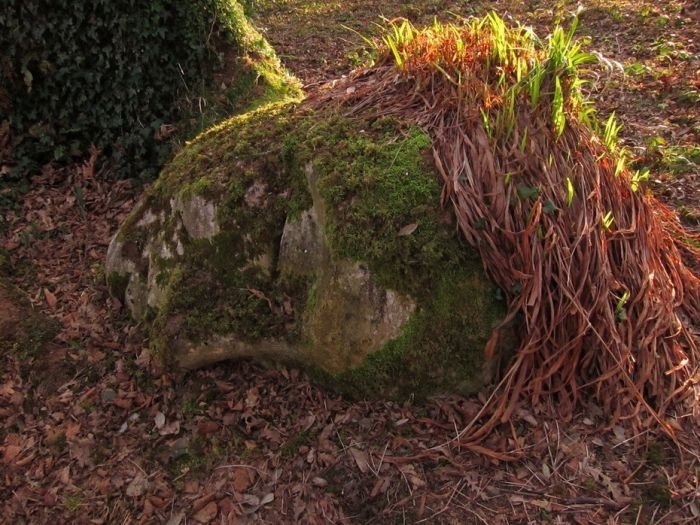|
|
The Lost Gardens Of Heligan, Mevagissey, United Kingdom
|
Two estate plans, dating respectively from 1777 and sometime before 1810, show the changes wrought to the Heligan estate during Henry Hawkins' ownership. The first plan shows a predominantly parkland estate, with the site of today's Northern Gardens occupied by a field. The second plan shows the development of shelter belts of trees surrounding the gardens, and the main shape of the Northern Gardens, the Mellon Yard and the Flower Garden are all readily discernable.
Henry Hawkins' descendants each made significant contributions to the development of the gardens, including the ornamental plantings along the estate's Long Drive, the Jungle, the hybridizing of rhododendrons and their planting around Flora's Green, and the creation of the Italian Garden.
Before the First World War the garden required the services of 22 gardeners to maintain it, but that war lead to the deaths of no fewer than 16 of those gardners, and by 1916 the garden was being looked after by only 8 men. In the 1920s Jack Tremayne's love of Italy, which had earlier inspired the Italian Garden, led him to set up permanent home there, and lease out Heligan. The house was tenanted for most of the 20th century, used by the US Army during the Second World War, and then converted into flats and sold, without the gardens, in the 1970s. Against this background, the gardens fell into a serious state of neglect, and were lost to sight.
After the childless death of Jack Tremayne, the Heligan estate came under the ownership of a trust to the benefit of several members of the extended Tremayne family. One of these, John Willis, lived in the area and was responsible for introducing record producer Tim Smit to the gardens. He and a group of fellow enthusiasts decided to restore the garden to its former glory, and eventually leased them from the Tremayne family.
|
|









